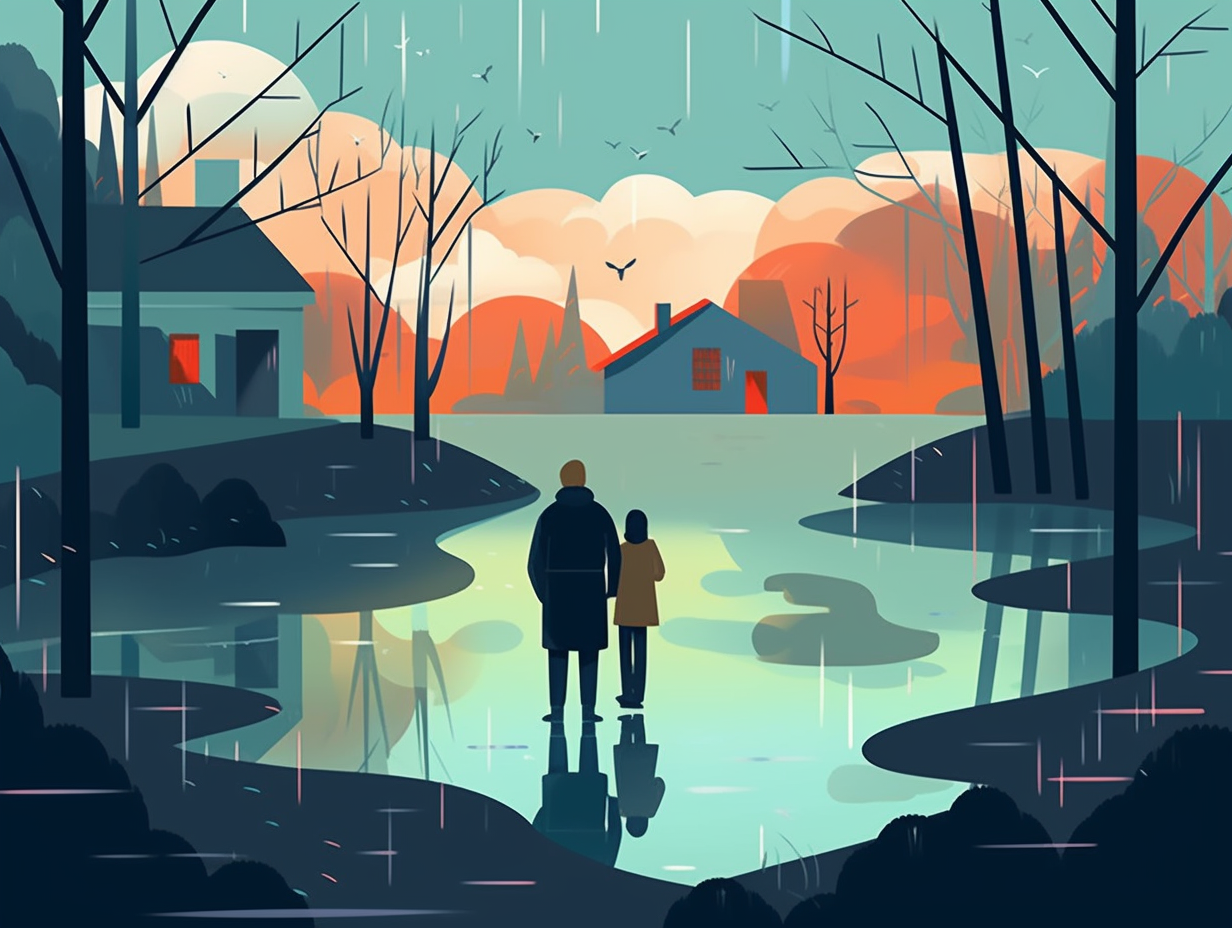10 Amazing Fun Facts About Cyclones: Unleash the Power of Nature's Wildest Storms!

1. Cyclone Spin Class
Cyclones must have aced their geography lessons because they've got a thing for hemispheres: in the Northern Hemisphere, they twist counterclockwise, while in the Southern Hemisphere, they spin clockwise - all thanks to the Coriolis effect that influences the curve of air masses and weather patterns.
Source => nationalgeographic.org
2. Screen Name Shuffle
It's all in a name, darling: for tropical storm systems, it's less of a Hollywood alias and more of a meteorological wardrobe change. In the North Atlantic and Northeast Pacific, they waltz down the red carpet as hurricanes, while in the Northwest Pacific, they sport the trendy typhoon label, and when in the South Pacific and Indian oceans, they insist on being credited as tropical cyclones. With category-defining winds over 74 mph (119 kph) and scene-stealing downpours, these divas of the weather world all perform the same role – they just switch up their names to keep things interesting.
Source => zurich.com

Did you know tornadoes have a signature dance move based on their location? Discover the spinning twist that sets northern and southern hemisphere tornadoes apart! 🌪️ 💃
=> Fun Facts about Tornadoes
3. Tornado Party Crashers
Ever heard of a tornado crashing a hurricane's party? That's right, they love to tag along: More than half of landfalling hurricanes produce at least one tornado, adding to the storm's destructive power. These tornadoes may not be as intense as their Great Plains counterparts, but they're certainly responsible for the chaotic aftermath seen post-hurricane.
Source => noaa.gov
4. Cyclone Beach Retreat
Cyclones may not be beach bums, but they sure enjoy warm ocean water and chill vibes: Tropical cyclones actually form when ocean water is at least 80°F (27°C) throughout a depth of about 150 ft. (46 m) and require moist air near the mid-level of the troposphere as well as low values of vertical wind shear between the surface and the upper troposphere.
Source => weather.gov

5. Tornado Breakdancing
You know what would make the swirling chaos of a hurricane even more exciting? A tornado breakdancing on the side: Hurricanes and tropical storms can actually produce tornadoes, which, although generally weaker and shorter-lived than their standalone cousins, can still pose a significant threat to people and property. These tornadoes often occur in rain band-embedded thunderstorms or even near the eyewall of the hurricane, showing that party-crashing tornadoes just can't resist a good cyclone fiesta. Stay informed and safe with guidelines from the National Weather Service Storm Prediction Center!
Source => nhc.noaa.gov
6. Eyewall Runway Show
Hold onto your hats, eyewalls are making a stormy debut: The most intense and powerful winds of a tropical cyclone reside in the eyewall, a meteorological runway 15 to 30 km from the storm center, where winds can sashay their way to over 200 mph and convective clouds tower up to 15,000 meters high. But don't be deceived by the seemingly calm eye of the storm - its winds may change direction in a flash, turning debris into accidental projectiles and providing a new meaning to the phrase "eye-catching".
Source => britannica.com
7. Calm Soul Cyclone
If the eye is the window to the soul, then cyclones must have the calmest souls of all: the eye of a mature tropical cyclone can span up to 40 kilometers wide, providing a serene center amid surrounding winds that can reach a whopping 300 kilometers per hour!
Source => en.wikipedia.org
8. Year-Round Uninvited Guests
Cyclones: they're not just for summer pool parties anymore! As surprising as discovering your grandma can do the moonwalk: cyclones can actually occur in any season, as long as warm ocean waters, a rapidly cooling atmosphere with height, and moist mid-level air conditions are present - making them the uninvited guests of weather events *year-round*.
Source => weather.gov
9. Wind Shear Debate
When cyclones and wind shear play a dangerous game of "hear me out...no, hear ME out": Gradual changes in wind shear can actually cause tropical cyclones to weaken and alter their trajectory, helping researchers predict their strength and path, potentially saving countless lives and properties.
Source => eos.org

10. Cyclone Temper Tantrums
Hold onto your hats and grab your umbrella-priority pass, Mother Nature's about to throw a stormy temper tantrum: Cyclones' power-packed tantrums actually weaken rapidly once they move inland, not due to the land dragging them down, but because they lose moisture and heat as they leave their watery playground – and although their sustained winds might calm down, they can still throw some gusty punches full of turbulence to remind us that they're there.
Source => actionnews5.com
Related Fun Facts




















